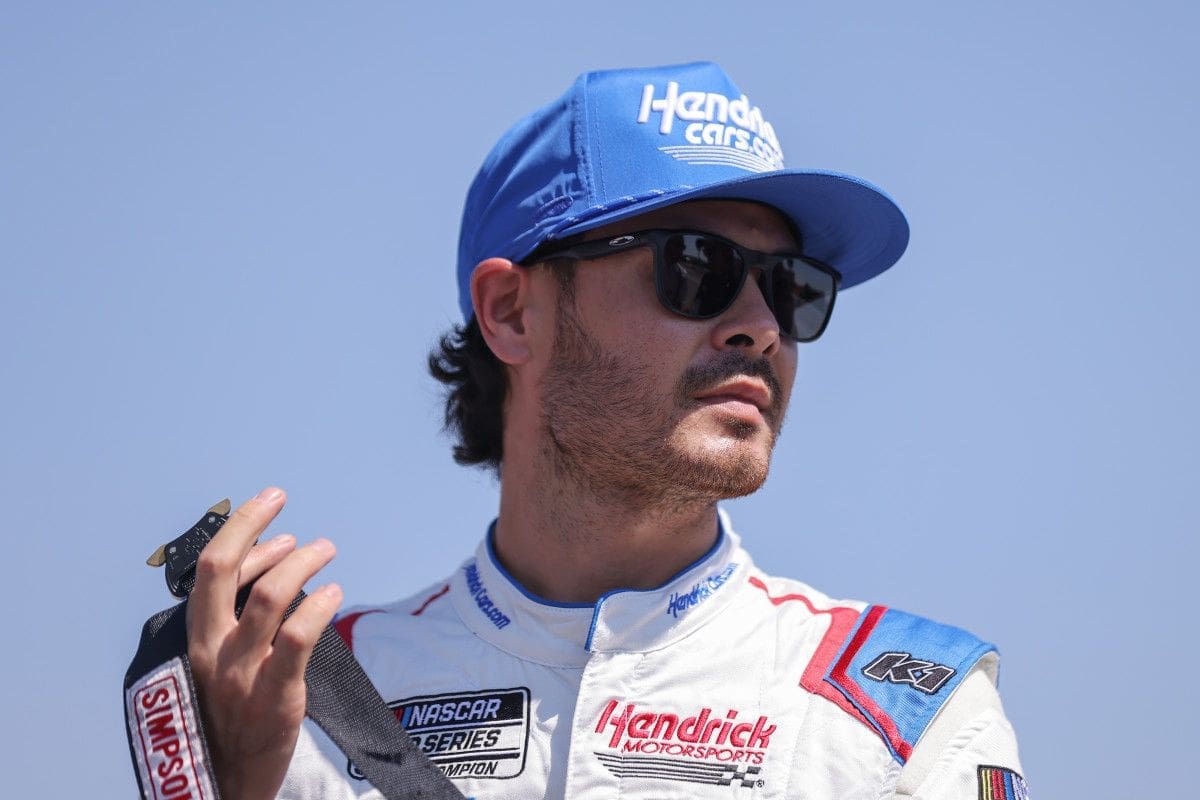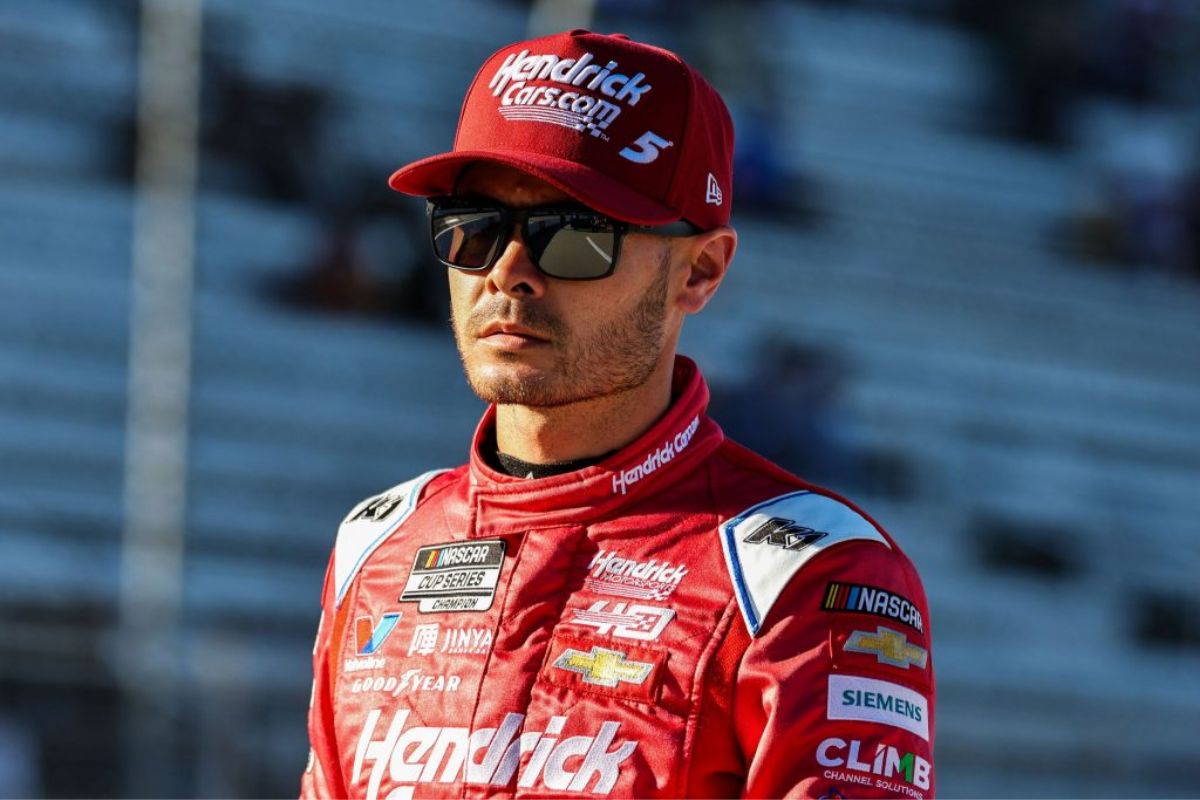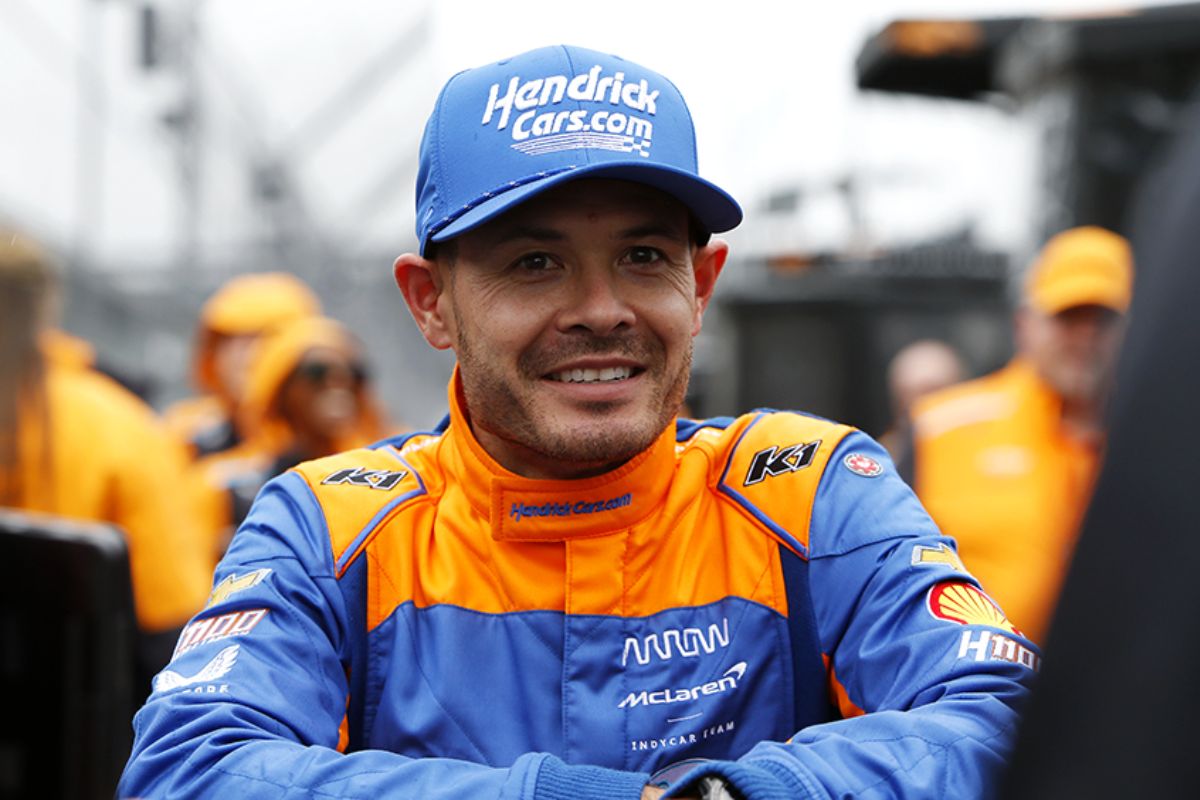Larson’s Take on NASCAR Practice: As the debate over NASCAR’s practice formats intensifies, Kyle Larson’s endorsement of shorter, more intense practice sessions brings a fresh perspective to the ongoing controversy. His background in dirt racing, where adaptability is crucial, contrasts sharply with the views of other seasoned drivers like Kyle Busch, who advocate for longer, more traditional practice times. This divergence in opinions raises critical questions about the future of NASCAR training protocols and their impact on race day performance.
Key Takeaways
- Kyle Larson sees reduced NASCAR practice times as sufficient, drawing from his dirt racing experience.
- Larson’s comfort with brief practices contrasts with traditional longer sessions.
- He believes 20 minutes of practice is ample, highlighting his adaptability.
- This stance deepens the controversy around NASCAR’s practice schedules.
- Larson’s perspective may influence a shift towards more efficient practice formats in NASCAR.
NASCAR Practice Pre and Post-COVID Era
The COVID-19 pandemic fundamentally altered the landscape of NASCAR practices, shifting from extensive multi-hour sessions to greatly condensed formats, impacting driver preparation and team strategy. Prior to the pandemic, NASCAR’s traditional practice structure involved sessions spanning two to three hours. This extensive track time was critical in allowing drivers to adapt to the detailed demands of different circuits and conditions. It also provided teams the opportunity to execute a thorough series of adjustments based on real-time feedback, and enhancing the car’s performance throughout the session.
In the pre-COVID era, this prolonged engagement with the track surface offered essential insights into tire behavior, fuel consumption patterns, and aerodynamic performance under varied racing conditions. Teams could methodically refine setups to optimize speed and stability, a process that was especially important on tracks where handling and tire wear are predominant factors.
Practice is a hot topic this week, even for @KyleLarsonRacin as he gets seat time in @IndyCar to prep for the #Indy500! 🏎️
📺 FULL EPISODE: https://t.co/1i9MVLBA0K pic.twitter.com/rkYimoTDAj
— Dirty Mo Media (@DirtyMoMedia) April 18, 2024
The reduced duration has constrained the feedback loop between drivers and their technical crews, necessitating quicker diagnostic assessments and more immediate decision-making. This change places a premium on efficiency and adaptability, compelling teams to prioritize the most impactful adjustments within a tighter window. It also elevates the importance of pre-event simulation and data analytics, as teams must arrive at the track with a well-honed baseline setup that requires minimal fine-tuning.
Kyle Larson’s Perspective
While many drivers have expressed concerns over reduced practice times in NASCAR’s post-COVID era, Kyle Larson offers a contrasting perspective based on his extensive background in dirt racing. Larson’s adaptation to NASCAR’s condensed practice schedules appears seamless, largely influenced by his prior experiences where brief, intense practice sessions are the norm. In dirt racing, where Larson cut his teeth, it is common to have as little as three to five laps to dial in a car’s setup before a race, a contrast to the more extensive, data-driven practices familiar to many of his NASCAR peers.
Larson’s comments on the matter highlight a unique benefit he perceives under the current regime. He openly shared with Dirty Mo Media on X, his perspective introduces an intriguing dimension to the debate on practice durations. Larson suggests that the practice could potentially level the playing field, perhaps be advantaging those with a background similar to his own, who are accustomed to making quick, decisive adjustments.
“Truthfully like 20 minutes is more than I’m used to in a dirt race. You know, we’ll get that’s three to five laps. [If] I feel like we have an advantage with our setups and stuff I would like no practice. I guess selfish but I don’t know I kind of like the way things are.”-Larson
Larson’s preference for minimal practice emphasizes a broader implication: the potential for these constraints to foster a different breed of driving skill. This adaptability could be particularly advantageous at a diverse array of tracks, possibly reshaping strategies across the sport.
Kyle Busch’s Perspective
While Larson, with his background in dirt racing, finds the brief practice sessions adequate due to his accustomed quickly adaptability, Busch’s viewpoint diverges substantially.
According to Busch, the reduction in practice time, a shift prompted by the logistical changes during the COVID era, has fundamentally altered the race preparation dynamics. Historically, drivers had access to 2-3 hours of practice, which Busch emphasizes was vital for meticulous adjustments and enhancements to vehicle performance.
“Years prior, before COVID era, it always was like 2 or 3 hours of practice that you would have for a given weekend. So a lot more time to fine tune the cars, to work on the cars. Now when you show up to the track, you get in, you get a little bit, and there’s not a whole lot you can adjust on the cars with the rules.”-Busch
In his commentary on the Pat McAfee Show, Busch shows that the practice sessions impair a team’s ability to execute significant modifications. This constraint is amplified by the stringent regulations that limit the scope of adjustments during these brief windows. He suggests that the reduced practice not only challenges the drivers’ ability to adapt but also potentially compromises the competitive integrity of the races.
Comparison of Views
Examining the contrasting views between Kyle Busch and Kyle Larson reveals significant differences in their adaptation to NASCAR’s reduced practice times.
Busch, a veteran driver for Richard Childress Racing, has openly expressed dissatisfaction with the current practice format. His performance this season, including three top-10 finishes and a near win at Atlanta, highlights his struggle with the brief 20-minute sessions. Busch argues that such short durations do not allow for meaningful adjustments or adequate preparation, which he feels are essential for competitive racing.
On the other hand, Kyle Larson, whose specific views on this issue have not been detailed here, typically adapts a more flexible approach in similar situations, based on his past responses to regulatory changes.
News in Brief: Larson’s Take on NASCAR Practice
The debate over NASCAR’s practice schedules highlights a significant evolution within the sport, amplified by the lasting impacts of the COVID-19 pandemic.
Larson’s adaptability, rooted in his dirt racing experience, contrasts sharply with Busch’s preference for extensive practice. This divergence in perspectives not only showcases individual adaptability but also signifies a broader shift towards valuing flexibility and quick decision-making in NASCAR. Such a trend challenges traditional practices, potentially shaping future training and performance strategies in the sport.
Our Reader’s Queries
Q. How many cup wins does Kyle Larson have?
A. Larson has an impressive track record, securing victory in 24 Cup races throughout his career. He secured spots in the NASCAR Playoffs consistently from 2016 to 2019, and again from 2021 to 2023, showcasing his prowess on the track. Larson’s inaugural win for Hendrick Motorsports came in March 2021 at the Las Vegas Motor Speedway, marking a milestone in his tenure with the team. Additionally, he claimed victory in the NASCAR All-Star Races in 2019, 2021, and 2023, further solidifying his status as a dominant force in the sport.
Q. What is Kyle Larson salary with Hendrick Motorsports?
Larson commands an estimated annual salary of around $10 million as he takes the wheel for Hendrick Motorsports in the NASCAR Cup Series. Inking his initial contract with the team in 2021, Larson and Hendrick Motorsports are currently embarking on their fourth season together in 2024.
Q. Why is Kyle Larson called Yung money?
A. Back in 2011, Spire Sports made moves to introduce Kyle Larson to NASCAR race teams across North Carolina. Despite being just 18 years old and hailing from Elk Grove, California, Larson had already earned the moniker “Yung Money” for his stellar performances on dirt tracks, showcasing immense talent on both dirt and pavement surfaces. Behind the wheel of Keith Kunz’s No. 67 midget car, Larson demonstrated his versatility by securing victories on both types of racing surfaces.
Q. Has Kyle Larson won Daytona 500?
A. Kyle Larson is setting his sights on breaking his 0-10 streak at the Daytona 500, a goal that’s been thus far. Among active series champions, he stands alongside three others who have yet to clinch victory at NASCAR’s biggest race. As anticipation builds for this year’s Daytona 500, the question of who will emerge victorious ranks as the second-most asked, trailing only a larger and more pressing inquiry.
ALSO READ: Larson Leaves Logano Stunned: Booth Return Feared





